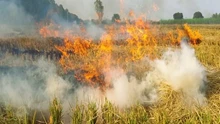
Bhumyamalaki, scientifically known as Phyllanthus amarus, is a versatile and highly valued medicinal herb. Commonly referred to as Country Gooseberry in English, it is known by various names in different languages: Jaramala in Hindi, Nelanelli in Kannada, and Bhudhatri in Sanskrit. This herb's diverse nomenclature reflects its widespread recognition and use across various cultures and regions. It is grown abundantly throughout India, particularly in states such as Maharashtra, Uttar Pradesh, Punjab, Bihar, Odisha, Andhra Pradesh, and some parts of Madhya Pradesh, Karnataka, and West Bengal.
Medicinal Uses of Bhumyamalaki
-
Bhumyamalaki, or Phyllanthus amarus, is renowned for its broad spectrum of medicinal properties.
-
This herb is particularly noted for its efficacy in treating liver-related ailments such as Hepatitis B and jaundice.
-
Its ability to fight off intestinal infections and aid in the management of diabetes makes it an invaluable addition to herbal medicine.
-
Beyond these applications, Bhuiamlaki plays a significant role in traditional polyherbal formulations aimed at recovering from bronchitis, leprosy, anemia, asthma, and hiccoughs.
Herbal Preparations
The medicinal properties of Bhumyamalaki can be harnessed through various preparations:
-
Bhumi Amla Juice: This preparation involves extracting juice from the fresh herb, which is often consumed directly for its health benefits.
-
Bhumi Amla Churna: This involves drying the herb and then grinding it into a fine powder. The churna can be mixed with water or other liquids for easy consumption.
Cultivation Practices
-
Varieties: The main varieties cultivated are Navyakrit and CIM-Jeevan.
-
Climate: Bhuiamlaki thrives in tropical climates with high rainfall, making it suitable for regions that experience such weather conditions.
-
Soil: The herb prefers clayey to loamy soils, which provide the right balance of nutrients and drainage. The ideal soil pH range for Bhumyamalaki cultivation is between 5.5 and 8, ensuring optimal growth and yield.
-
Propagation: Bhuiamlaki is propagated through seeds, with a recommended seed rate of 1 kg per hectare. This ensures a good density of plants in the field, which is crucial for maximizing yield.
-
Spacing and Planting: Seeds are initially raised in a nursery. After 35-40 days, when the seedlings reach a height of 10-15 cm, they are transplanted into the field. The recommended spacing is 15 x 10 cm, which provides enough room for each plant to grow without overcrowding. The ideal planting season is during June-July.
-
Manuring: To ensure healthy growth, it is essential to apply 10 tonnes of farmyard manure (FYM) per hectare. This organic manure enriches the soil, providing essential nutrients that support the herb's growth.
-
Harvesting and Yield: Bhumyamalaki is ready for harvest about three months after transplanting. An average yield of 2000 kg of dry herb can be obtained per hectare. This yield makes Bhumyamalaki a commercially viable crop for farmers.
-
Selling Price: The dry herb has a market price of approximately Rs 25 per kg, offering a good return on investment for farmers.













